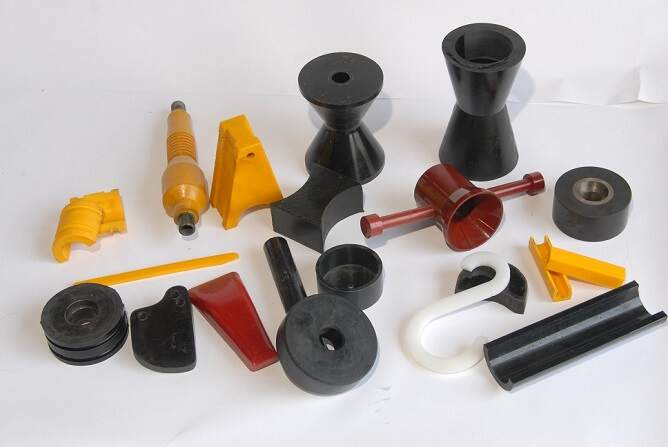Compression molding is used with thermosetting plastics. Thermoset plastic materials are used by plastic manufacturers in viscous material or free-flowing granular form. The material is placed in a heated mold, and the mold is closed by a hydraulic press. Compression molding is typically performed at 350 degrees of temperature if a mold pressure is used it is used at 100 psi containing curing time that lasts up to 3 minutes. After the curation of material is done the mold is opened so that the plastic package is pushed out. Compression molding is a low-cost process and can produce high volumes. Compression molding provides us with a great advantage of metal loading factor, and not only that it is also the highest of any other method used for plastic molding.
Types of compression molding:
Several types of compression mold exist because of the type of material used in molding such as sheet molding compound, bulk molding compound, thick molding compound, and another one known as wet lay-up compression molding. A large hydraulic press mounted with metal molds is the basic and primary tool of compression molding. The process can be automated. Compression molding enables features and flexibility for example multiple inserts, bosses, ribs, and attachments because of the introduced plastic part designs. Good surfaces are finishable, contributing to a lower part finishing cost. Many operations such as, trimming and machining are minimized in the process of compression molding which ultimately lowers the labor costs. There are three different types of compression of molding.
Flash mold:
In an open flash mold, a slightly higher amount of molding powder is loaded into the mold cavity. When the top and bottom straps are closed, the excess material leaks out and forms a flash. It causes the blockage of plastic that remains in the cavity which causes press on the plungers. It provides us with low-cost manufacturing and a simple structure. Butterfly-shaped or flat products are the best for this kind of molding as it presses the products and flashes out the excess materials during closes and the process cannot be slowed as well.
Positive mold:
In fully positive molds there is no permission for the excess powder to be placed in the cavity. If the excess powder is clogged, the mold will not close; Insufficient charge will result in reduced thickness of the molded object. To get the perfect result we should get the charge measured correctly and this might seem like a disadvantage for some people. Adding to the list of disadvantages, the blisters may appear on the surface of the molded products due to the release of gases during chemical curing reactions. It is a high-cost and high-maintenance manufacturing process. During pressing the quality is high for operation technology. To close accurately there are two main parts called female and male mold parts. The basic purpose is to obtain the high-density product which is achieved through high pressure.
Semi-positive molds:
Semi-positive molds are a compilation of the characteristics of fully positive and flash molds which allows us for additional powder and flash. It is possible to get flash both horizontally and vertically. They are better from an application standpoint if compared to other types, but it is also expensive to maintain and manufacture in comparison. Its structure lies between the structure of fully positive and flash molds. There might be certain resistances, but the material still flashes out during the pressing or closing. More complicated shapes are printed in semi-positive molds than the other two.
Shun Hao molds:
It is basically and originally a part of flash out mold but needs trimming for the edges of the products for a better quality of presentation of the shapes. Shun Hao molds get a longer and sustained life which is made sure of through CN machines which are made by experienced technicians and designers. It is one of the least flashes out molds that helps the industry of tableware such as saving the costs and developing better in the future.
Advantages of molding:
- It provides us with a relatively low initial setup cost and fast setup time, although not cheaper than plastic injection molding.
- It gives us the chance to mold heavy plastic parts through the latest technology.
- Gives a good surface finish of molded parts.
- There is relatively less material wastage as compared to other methods.
- Oriented fiber mat or chopped strand can be manufactured.
Tooling typically consists of machined or cast metal or alloy molds that can be in single or multiple-cavity configurations. Sometimes, steel molds are chromed plated and hardened for better durability and sustainability. Steam, electricity, hot oil is used for heating the molds. Side cores, insert provisions and other refinements are often employed. Mold materials include forged steel, cast iron, and cast aluminum.
Also Read: An Intro Regarding Optimization of Network for VoIP


